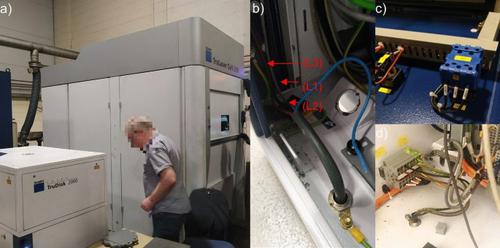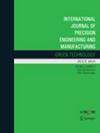工业能源优化:激光切割案例研究
IF 5.6
3区 工程技术
Q1 ENGINEERING, MANUFACTURING
International Journal of Precision Engineering and Manufacturing-Green Technology
Pub Date : 2023-09-28
DOI:10.1007/s40684-023-00563-y
引用次数: 0
摘要
在一个日益科技化的世界里,制造业的能源效率是非常重要的。虽然大型制造公司有资源委托能源研究,对业务的影响最小,但对于中小型企业(SME)来说并非如此。这些企业通常只有少量的激光加工单元;因此,进行能源研究可能会极大地破坏正常的操作。由于不断上升的全球能源成本对缺乏规模经济效益的小企业影响最大,它们同时也是最需要提高能源效率的,同时也面临着实施这些措施的最大实际障碍。在本研究中,设计了一种与正常操作同时运行的激光加工能量分析方法,并将其应用于英国一家中小企业的激光垫片切割单元。本文演示了在生产环境中识别操作状态的方法,并分析了特定能源消耗和范围2二氧化碳排放结果。加工状态本身对整体能源性能的影响最大,单片材料的影响为55%,批量加工时增加到71%。由于隔离变量的限制,在这种生产环境中生成理想数据是具有挑战性的,这些“现实世界”的限制也讨论了与现场生产同时进行系统能量分析的限制,并提出了进一步分析的建议。本文章由计算机程序翻译,如有差异,请以英文原文为准。

Industrial Energy Optimisation: A Laser Cutting Case Study
Abstract In an increasingly technological world, energy efficiency in manufacturing is of great importance. While large manufacturing corporations have the resources to commission energy studies with minimal impact on operations, this is not true for small and medium enterprises (SME’s). These businesses will commonly only have a small number of laser processing cells; thus, to carry out an energy study can be extremely disruptive to normal operations. Since rising global energy costs also have the largest impact on small businesses who lack the benefit of economies of scale, they are simultaneously the most in need of improvements to energy efficiency, while also facing the strongest practical barriers to implementing them. In this study, a laser processing energy analysis methodology was designed to run simultaneously with normal operation and applied to a laser shim-cutting cell in a UK-based SME. This paper demonstrates the methodology for identifying operating states in a production environment and Specific Energy Consumption and Scope 2 CO 2 emissions results are analysed. The Processing state itself was the most impactful on overall energy performance, at 55% for single sheets of material, increasing to 71% when batch processing. Generating idealised data in this production environment is challenging with restrictions to isolating variables, these “real-world” limitations for conducting system energy analysis simultaneously with live production are also discussed to present recommendations for further analysis.
求助全文
通过发布文献求助,成功后即可免费获取论文全文。
去求助
来源期刊

International Journal of Precision Engineering and Manufacturing-Green Technology
ENGINEERING, MANUFACTURING-ENGINEERING, MECHANICAL
CiteScore
10.30
自引率
9.50%
发文量
65
审稿时长
5.3 months
期刊介绍:
Green Technology aspects of precision engineering and manufacturing are becoming ever more important in current and future technologies. New knowledge in this field will aid in the advancement of various technologies that are needed to gain industrial competitiveness. To this end IJPEM - Green Technology aims to disseminate relevant developments and applied research works of high quality to the international community through efficient and rapid publication. IJPEM - Green Technology covers novel research contributions in all aspects of "Green" precision engineering and manufacturing.
 求助内容:
求助内容: 应助结果提醒方式:
应助结果提醒方式:


